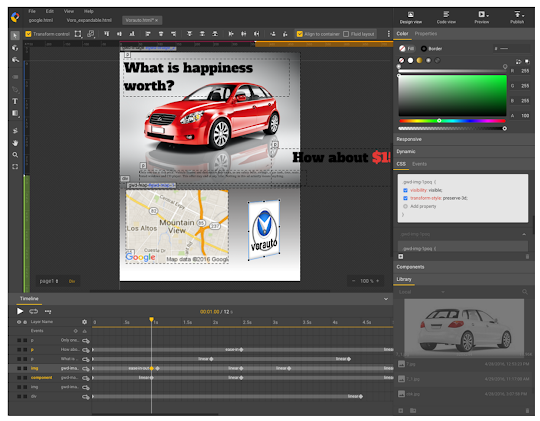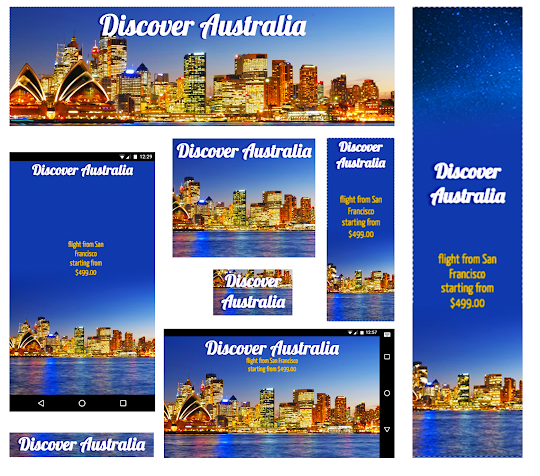The New York Times on a reader-first philosophy: Winning with Native Advertising
June 14th, 2016 | by David Michael McFarlane | published in Google DoubleClick
Native advertising is an increasingly popular ad monetization strategy for publishers. The New York Times is an early adopter, and recently we caught up with their Managing Director of Ad Innovation, Nicholas Van Amburg, on what they’ve learned from running native ads. Here’s what he shared.
The New York Times’ first issue was printed in 1851 as a penny paper, and now, we share news with over one million digital-only subscribers every day. In our 164-year history, we’ve seen our readers shift from print, to computers, to mobile. Despite all of this change, however, we’ve remained committed to delivering the highest-quality content to our readers—whether it’s news, features, opinions or ads. First and foremost, it makes our readers happy. But, it also serves as an important foundation for a sustainable monetization strategy. Whether readers are interacting with our articles, videos, podcasts, or apps, our ads needs to be just as engaging as our own content.
To create a strong user experience wherever people are reading news, we’ve experimented a lot with our native advertising strategy. Here’s what we’ve learned:
Create effective ad formats that scale
One of our early experimentations with native advertising was a solution we called ‘Flex Frames.’ To offer the best user experience possible, we ensured Flex Frame ads behaved like organic content by matching the look and feel of surrounding contexts, both in terms of editorial content and across different platforms and devices.
While Flex Frames successfully adapted to the look and feel of our content, we faced roadblocks when attempting to scale — our team was dedicating countless hours to coding and compiling ads for review by advertisers. To overcome this challenge, we partnered with DoubleClick and have realized significant efficiencies since.
Use data to make smart decisions
The ability to leverage our first party audience data proved crucial to our native advertising strategy, allowing us to place the right ad in front of the right person at the right time, both in terms of content and format. For example, we will serve a video ad rather than a photo story if we know a reader is more likely to view video content than view photos in a carousel. These highly-relevant ads produce excellent results with 6X higher CTRs with 4X more viewable impressions.
Launch and iterate
Metrics are important, and you have to know what to measure in order to decide whether ads are working for you and your users. It’s important to identify KPIs at the start of a project, and measure them regularly. These KPIs may differ based on the company, but for us, after running a variety of focus groups through our Consumer Insights Group, we found user engagement to be one of our most important KPIs. We want to know the ad experience is a positive one for our users—that our ads aren’t just tolerated, but that people actually opt to spend time with them. We’re constantly testing ads to understand what’s working and what’s not.
Educate sales and advertisers to see the value of native ads
We’ve been working with native ads for over a year now, but for many people, these ads are still relatively new. Even a year in, the hardest thing about my job continues to be educating sales teams about native formats. And the same goes for advertisers—it’s our job at The New York Times to demystify component-based ads and explain why they’re better for the whole ecosystem. With more education, sales teams can better sell native ads, and advertisers will start opting for more native formats.
The next generation of native ads
Taking what we’ve learned so far, I believe the next big leap for native ads is to deliver more meaningful, contextually-relevant experiences across an ever-broader spectrum of media formats and devices. This is important because The New York Times isn’t just a paper or a website anymore. It’s a website. It’s an app. It’s a host of touchpoints and experiences where the user sits at the core. We’re headed for a world that lives on an incredibly fractured series of screens and touch points — and our challenge is to make sure that we are meeting and exceeding users’ expectations across all them.
We recently released Native Ads on DoubleClick across all screens — on the web and in apps — to all our partners. Watch the video below to learn more about The New York Times’ strategy and approach to native advertising or continue to DoubleClick.com to read the case study.
 |
Posted by Nicholas Van Amburg Managing Director of Ad Innovation, The New York Times |





 You can customize the UI so it fits the way that you work best:
You can customize the UI so it fits the way that you work best:
 We’re really excited to bring this new and improved Google Web Designer to creative developers. We hope the responsive design capabilities help you create ads for multiple sizes more easily, so you can bring your experiences to life across screens.
We’re really excited to bring this new and improved Google Web Designer to creative developers. We hope the responsive design capabilities help you create ads for multiple sizes more easily, so you can bring your experiences to life across screens.



